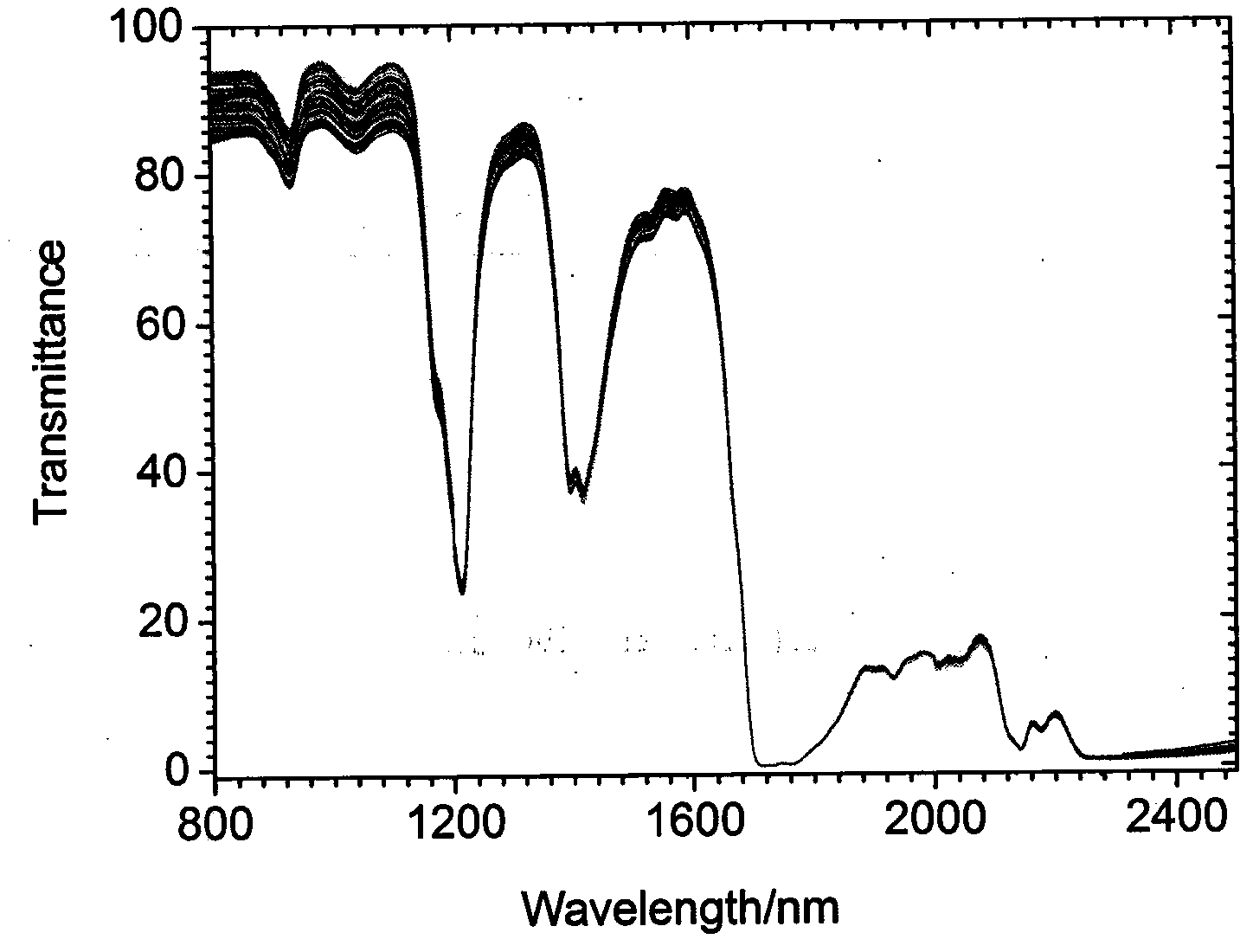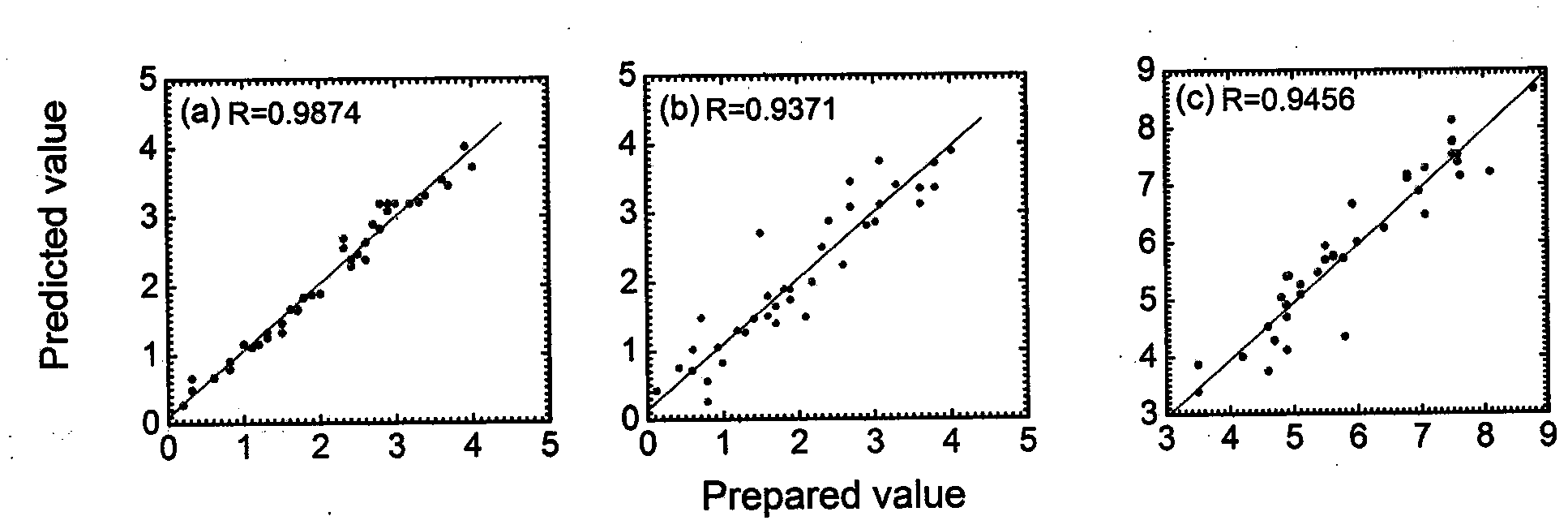Method for quickly, accurately and quantitatively detecting ratio of various oil components in blend oil
A detection method and technology for blending oil, applied in the field of analytical chemistry, can solve the problems of long experimental period, difficult to distinguish, complicated data, etc., and achieve the effect of convenient operation
- Summary
- Abstract
- Description
- Claims
- Application Information
AI Technical Summary
Problems solved by technology
Method used
Image
Examples
Embodiment
[0018] 1) Blending oil near-infrared spectrum collection. Sunflower oil, soybean oil, and peanut oil were selected as base oils to simulate the proportioning blending oil. According to the size of the sample cell, select 10g as the total weight. Using an analytical balance, add the three oils in proportion. Theoretically, the range of peanut oil content to be configured is 1%-40%, and soybean oil and sunflower oil are randomly added without repetition. Run the control software, set the measurement parameters and blank background, and scan the baseline. Spectra will be collected in a near-infrared instrument, and each sample will be scanned three times. Save spectral data in txt format. The wavelength range 800-2500nm adopts the transmission mode, the transmittance, the wavelength range selects the interval of 1nm, the faster measurement speed (1.0nm), the spectral width selects normal, and the scanning method selects repeated scanning. figure 1 It is the near-infrared spe...
PUM
 Login to View More
Login to View More Abstract
Description
Claims
Application Information
 Login to View More
Login to View More - R&D
- Intellectual Property
- Life Sciences
- Materials
- Tech Scout
- Unparalleled Data Quality
- Higher Quality Content
- 60% Fewer Hallucinations
Browse by: Latest US Patents, China's latest patents, Technical Efficacy Thesaurus, Application Domain, Technology Topic, Popular Technical Reports.
© 2025 PatSnap. All rights reserved.Legal|Privacy policy|Modern Slavery Act Transparency Statement|Sitemap|About US| Contact US: help@patsnap.com



